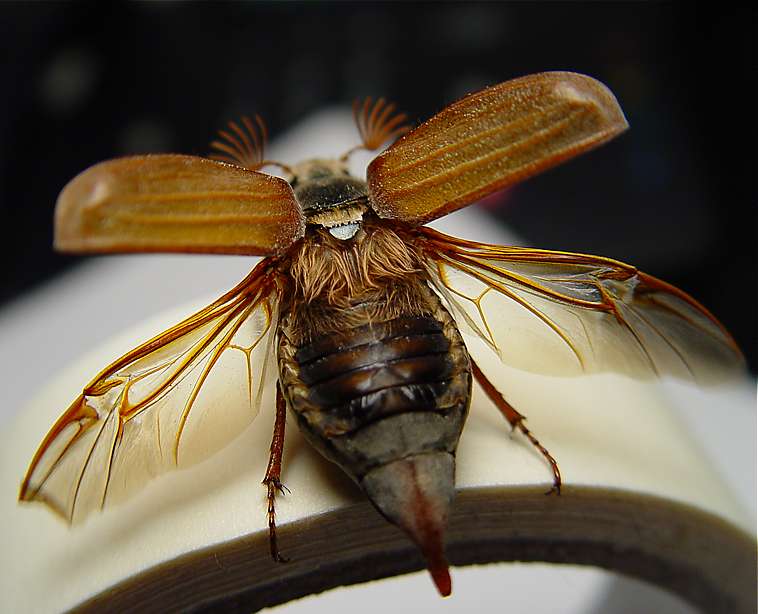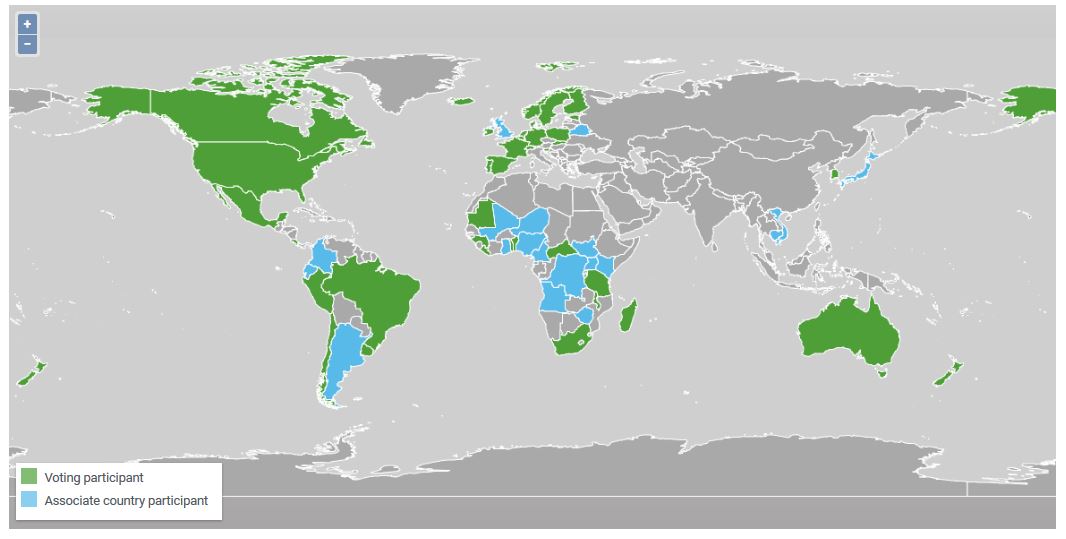|
Agabus Didymus
''Agabus didymus'' is a species of beetles belonging to the family Dytiscidae. Description ''Agabus didymus'' can reach a length of . The head is black. The pronotum is dark with reddish lateral margins and base. Elytrae have three rows of punctures and characteristic lateral and subapical translucent cream N-shaped marks. Distribution This species is present in most of Europe, in the Near East and in North Africa. References External links * Agabus didymus' - Biodiversity Heritage Library - Bibliografia * Agabus didymus' - NCBI Taxonomy Database * Agabus didymus' - Global Biodiversity Information Facility * Agabus didymus' - Encyclopedia of Life The ''Encyclopedia of Life'' (''EOL'') is a free, online encyclopedia intended to document all of the 1.9 million living species known to science. It is compiled from existing trusted databases curated by experts and with the assistance of no ... didymus Beetles described in 1795 Beetles of Europe Beetles of North Afri ... [...More Info...] [...Related Items...] OR: [Wikipedia] [Google] [Baidu] |
Guillaume-Antoine Olivier
Guillaume-Antoine Olivier (; 19 January 1756, Les Arcs, Var, Les Arcs near Toulon – 1 October 1814, Lyon) was a French entomologist and naturalist. Life Olivier studied medicine in Montpellier, where he became good friends with Pierre Marie Auguste Broussonet. With Jean Guillaume Bruguière and Jean-Baptiste Lamarck, he collaborated in the creation of ''Journal d'Histoire Naturelle'' (1792). Afterwards, he served as a naturalist on a 6-year scientific journey that took him to Asia Minor, Persia, Egypt, Cyprus and Corfu. He returned to France in 1798 with a large collection of natural history specimens from his travels. Later, he was associated with the ''École nationale vétérinaire d'Alfort'', where in 1811, he was appointed professor of zoology. Olivier was a close friend of Johan Christian Fabricius and a patron of Pierre André Latreille. Although primarily an entomologist, Olivier also worked in the scientific field of herpetology, describing several new species of A ... [...More Info...] [...Related Items...] OR: [Wikipedia] [Google] [Baidu] |
Beetle
Beetles are insects that form the order Coleoptera (), in the superorder Endopterygota. Their front pair of wings are hardened into wing-cases, elytra, distinguishing them from most other insects. The Coleoptera, with about 400,000 described species, is the largest of all orders, constituting almost 40% of described insects and 25% of all known animal life-forms; new species are discovered frequently, with estimates suggesting that there are between 0.9 and 2.1 million total species. Found in almost every habitat except the sea and the polar regions, they interact with their ecosystems in several ways: beetles often feed on plants and fungi, break down animal and plant debris, and eat other invertebrates. Some species are serious agricultural pests, such as the Colorado potato beetle, while others such as Coccinellidae (ladybirds or ladybugs) eat aphids, scale insects, thrips, and other plant-sucking insects that damage crops. Beetles typically have a particularly har ... [...More Info...] [...Related Items...] OR: [Wikipedia] [Google] [Baidu] |
Dytiscidae
The Dytiscidae – based on the Greek ''dytikos'' (δυτικός), "able to dive" – are the predaceous diving beetles, a family of water beetles. They occur in virtually any freshwater habitat around the world, but a few species live among leaf litter. The adults of most are between long, though much variation is seen between species. The European '' Dytiscus latissimus'' and Brazilian '' Megadytes ducalis'' are the largest, reaching up to and respectively. In contrast, the smallest is likely the Australian '' Limbodessus atypicali'' of subterranean waters, which only is about long. Most are dark brown, blackish, or dark olive in color with golden highlights in some subfamilies. The larvae are commonly known as water tigers due to their voracious appetite. They have short, but sharp mandibles and immediately upon biting, they deliver digestive enzymes into prey to suck their liquefied remains. The family includes more than 4,000 described species in numerous genera ... [...More Info...] [...Related Items...] OR: [Wikipedia] [Google] [Baidu] |
Pronotum
The prothorax is the foremost of the three segments in the thorax of an insect, and bears the first pair of legs. Its principal sclerites (exoskeletal plates) are the pronotum ( dorsal), the prosternum ( ventral), and the propleuron ( lateral) on each side. The prothorax never bears wings in extant insects (except in some cases of atavism), though some fossil groups possessed wing-like projections. All adult insects possess legs on the prothorax, though in a few groups (e.g., the butterfly family Nymphalidae) the forelegs are greatly reduced. In many groups of insects, the pronotum is reduced in size, but in a few it is hypertrophied, such as in all beetles (Coleoptera). In most treehoppers (family Membracidae, order Hemiptera), the pronotum is expanded into often fantastic shapes that enhance their camouflage or mimicry. Similarly, in the Tetrigidae, the pronotum is extended backward to cover the flight wings, supplanting the function of the tegmina. See also * Glossary o ... [...More Info...] [...Related Items...] OR: [Wikipedia] [Google] [Baidu] |
Elytra
An elytron (; ; , ) is a modified, hardened forewing of beetles (Coleoptera), though a few of the true bugs ( Hemiptera) such as the family Schizopteridae are extremely similar; in true bugs, the forewings are called hemelytra (sometimes alternatively spelled as "hemielytra"), and in most species only the basal half is thickened while the apex is membranous, but when they are entirely thickened the condition is referred to as "coleopteroid". An elytron is sometimes also referred to as a shard. Description The elytra primarily serve as protective wing-cases for the hindwings underneath, which are used for flying. To fly, a beetle typically opens the elytra and then extends the hindwings, flying while still holding the elytra open, though many beetles in the families Scarabaeidae and Buprestidae can fly with the elytra closed (e.g., most Cetoniinae; ). In a number of groups, the elytra are reduced to various degrees, (e.g., the beetle families Staphylinidae and Ripiphoridae), o ... [...More Info...] [...Related Items...] OR: [Wikipedia] [Google] [Baidu] |
Biodiversity Heritage Library
The Biodiversity Heritage Library (BHL) is the world’s largest open access digital library for biodiversity literature and archives. BHL operates as worldwide consortiumof natural history, botanical, research, and national libraries working together to address this challenge by digitizing the natural history literature held in their collections and making it freely available for open access as part of a global “biodiversity community.” The BHL consortium works with the international taxonomic community, publishers, bioinformaticians, and information technology professionals to develotools and servicesto facilitate greater access, interoperability, and reuse of content and data. BHL provides a range of services, data exports, and APIs to allow users to download content, harvest source data files, and reuse materials for research purposes. Through taxonomic intelligence tools developed bGlobal Names Architecture BHL indexes the taxonomic names throughout the collection, allowing ... [...More Info...] [...Related Items...] OR: [Wikipedia] [Google] [Baidu] |
Global Biodiversity Information Facility
The Global Biodiversity Information Facility (GBIF) is an international organisation that focuses on making scientific data on biodiversity available via the Internet using web services. The data are provided by many institutions from around the world; GBIF's information architecture makes these data accessible and searchable through a single portal. Data available through the GBIF portal are primarily distribution data on plants, animals, fungi, and microbes for the world, and scientific names data. The mission of the GBIF is to facilitate free and open access to biodiversity data worldwide to underpin sustainable development. Priorities, with an emphasis on promoting participation and working through partners, include mobilising biodiversity data, developing protocols and standards to ensure scientific integrity and interoperability, building an informatics architecture to allow the interlinking of diverse data types from disparate sources, promoting capacity building and ca ... [...More Info...] [...Related Items...] OR: [Wikipedia] [Google] [Baidu] |
Encyclopedia Of Life
The ''Encyclopedia of Life'' (''EOL'') is a free, online encyclopedia intended to document all of the 1.9 million living species known to science. It is compiled from existing trusted databases curated by experts and with the assistance of non-experts throughout the world. It aims to build one "infinitely expandable" page for each species, including video, sound, images, graphics, as well as text. In addition, the Encyclopedia incorporates content from the Biodiversity Heritage Library, which digitizes millions of pages of printed literature from the world's major natural history libraries. The project was initially backed by a US$50 million funding commitment, led by the MacArthur Foundation and the Sloan Foundation, who provided US$20 million and US$5 million, respectively. The additional US$25 million came from five cornerstone institutions—the Field Museum, Harvard University, the Marine Biological Laboratory, the Missouri Botanical Garden, and the Smithsonian Ins ... [...More Info...] [...Related Items...] OR: [Wikipedia] [Google] [Baidu] |
Agabus (beetle)
''Agabus'' is a large genus of predatory aquatic beetles in the family Dytiscidae, proposed in 1817 by William Elford Leach and named after Agabus, an early follower of Christianity. The adult beetles are moderate-sized, 5 to 14 mm long. The genus is primarily Holarctic in distribution, with only a few species known from the Afrotropical and Neotropical realms. Ross H. Arnett, Michael C. Thomas (2002). American Beetles: Staphyliniformi'. Boca Raton, FL: CRC Press. . P. 175-176.Anders N. Nilsson, Mogens Holmen (1995). The Aquatic Adephaga (Coleoptera) of Fennoscandia and Denmark: II - Dytiscidea'. Leiden - a.o.: Brill. . P. 87. Three species of ''Agabus'', namely '' A. clypealis'', '' A. discicollis'' and '' A. hozgargantae'' are endangered according to the IUCN Red List. The division into subgenera is not widely accepted. However, a number of species groups are recognized after the works of David J. Larson and Anders N. Nilsson. The genus is probably polyphyletic or parap ... [...More Info...] [...Related Items...] OR: [Wikipedia] [Google] [Baidu] |
Beetles Described In 1795
Beetles are insects that form the order Coleoptera (), in the superorder Endopterygota. Their front pair of wings are hardened into wing-cases, elytra, distinguishing them from most other insects. The Coleoptera, with about 400,000 described species, is the largest of all orders, constituting almost 40% of described insects and 25% of all known animal life-forms; new species are discovered frequently, with estimates suggesting that there are between 0.9 and 2.1 million total species. Found in almost every habitat except the sea and the polar regions, they interact with their ecosystems in several ways: beetles often feed on plants and fungi, break down animal and plant debris, and eat other invertebrates. Some species are serious agricultural pests, such as the Colorado potato beetle, while others such as Coccinellidae (ladybirds or ladybugs) eat aphids, scale insects, thrips, and other plant-sucking insects that damage crops. Beetles typically have a particularly hard exo ... [...More Info...] [...Related Items...] OR: [Wikipedia] [Google] [Baidu] |
Beetles Of Europe
Beetles are insects that form the order Coleoptera (), in the superorder Endopterygota. Their front pair of wings are hardened into wing-cases, elytra, distinguishing them from most other insects. The Coleoptera, with about 400,000 described species, is the largest of all orders, constituting almost 40% of described insects and 25% of all known animal life-forms; new species are discovered frequently, with estimates suggesting that there are between 0.9 and 2.1 million total species. Found in almost every habitat except the sea and the polar regions, they interact with their ecosystems in several ways: beetles often feed on plants and fungi, break down animal and plant debris, and eat other invertebrates. Some species are serious agricultural pests, such as the Colorado potato beetle, while others such as Coccinellidae (ladybirds or ladybugs) eat aphids, scale insects, thrips, and other plant-sucking insects that damage crops. Beetles typically have a particularly hard ... [...More Info...] [...Related Items...] OR: [Wikipedia] [Google] [Baidu] |





